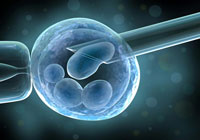 UNDERSTANDING CONCEPTION UNDERSTANDING CONCEPTION |
|||||||||||||
 |
Pregnancy is a complicated process that depends on many factors :
|
||||||||||||
If you have had previous tests in another hospital, we would like to get the results, so as to avoid repeating the investigations when possible. It would be helpful to bring your previous reports with you. The reality is that human reproduction is a fairly inefficient process. In one cycle for the average fertile couple, the chance of fertilisation from any particular meeting of egg and sperm can be about 80%, but by the time of the expected menstrual period roughly half of the early embryos have already failed to develop. Many of these lost embryos are fundamentally abnormal and are unable to survive. In fact, the menstrual period might not even be delayed and the couple not realise that an early pregnancy has been lost. If a menstrual period is missed, a quarter or more of the remaining embryos can still fail later. Various clinical studies have calculated the chance of pregnancy among population groups who do not use contraception, and indicate that the probability of a live birth after exposure in any one month averages about 1 in 5, or a 20% chance. The age factor- by age 36 a normal woman's chances of conceiving per month is decreased by half. The downward slope continues until by age 45 the average natural fertility rate per month is approximately 1%. |
|||||||||||||




